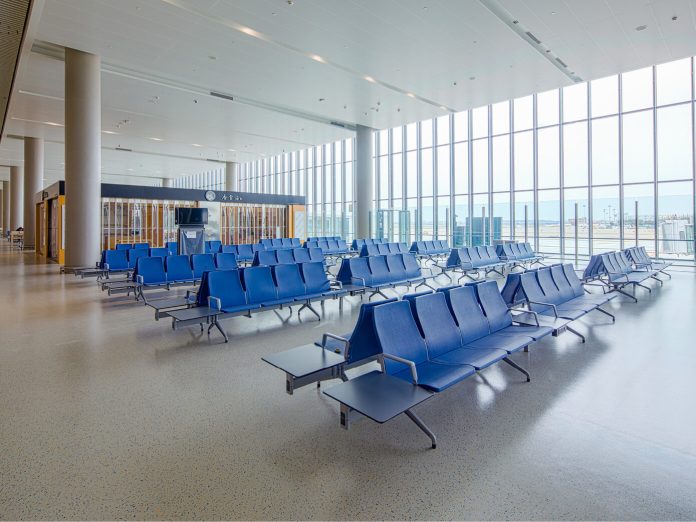Airport seating is far more than a collection of chairs placed in terminals. It represents a strategic investment that shapes the passenger experience, influences traffic flow, and reinforces an airport’s image. Each seating system goes through a detailed lifecycle that begins with design and extends through installation and ongoing maintenance. Understanding this process is essential for airport operators, architects, and facility managers who want to create spaces that are comfortable, efficient, and durable.
A reputable airport seating manufacturer plays a critical role in guiding airports through every stage of this lifecycle, from concept development to end-of-life considerations. This article explores how seating evolves from initial planning to years of daily use.
Design and Planning
The lifecycle starts with thoughtful design. Manufacturers collaborate closely with airport stakeholders to define objectives, which may include passenger comfort, brand alignment, and compliance with safety and accessibility standards.
Key considerations during this phase include:
- Passenger Demographics: Airports serving primarily business travelers may prioritize integrated power outlets and work surfaces, while leisure-focused airports might choose more relaxed seating configurations.
- Traffic Patterns: Understanding how people move through terminals helps determine the optimal placement and density of seating.
- Aesthetic Goals: Materials, colors, and finishes are selected to harmonize with the architecture and express the airport’s identity.
- Regulatory Requirements: Seating must comply with fire safety standards, accessibility regulations, and durability benchmarks.
Manufacturers provide 3D models and layout proposals that help stakeholders visualize how seating will function within the space.
Engineering and Prototyping
Once a design is approved, engineering teams develop detailed technical drawings and specifications. At this stage, manufacturers select materials that deliver the required performance while aligning with budget and sustainability goals. Prototypes may be created to evaluate:
- Ergonomics and passenger comfort
- Structural integrity under heavy loads
- Surface durability and ease of cleaning
- Integration of power and data modules
Feedback from stakeholders during prototyping ensures the final product meets all expectations before production begins.
Manufacturing and Quality Control
When prototypes are finalized, manufacturing moves into full-scale production. High-quality seating systems rely on precision engineering and rigorous quality control. Production typically involves:
- Cutting and forming metal components for frames and supports
- Upholstering seat cushions with durable, fire-resistant materials
- Assembling modular components such as armrests, legs, and accessories
- Applying protective finishes and coatings
Quality control inspections occur at multiple stages to ensure consistency and adherence to specifications. Each component is checked for dimensional accuracy, finish quality, and structural performance.
Logistics and Installation
After production, manufacturers coordinate logistics to transport seating to the airport site. Packaging is designed to protect components while maximizing shipping efficiency. During installation, experienced teams assemble seating according to the approved layouts. This process includes:
- Anchoring seating securely to floors where required
- Connecting power modules and verifying functionality
- Adjusting configurations to account for real-world conditions
- Conducting final inspections to ensure proper alignment and finish quality
Proper installation is crucial to meeting safety standards and delivering a polished, professional appearance.
Training and Handover
Before seating areas are opened to the public, manufacturers often provide training to airport staff on routine cleaning, minor repairs, and maintenance best practices. Detailed documentation, including manuals and warranties, supports staff in managing seating throughout its service life.
Maintenance and Lifecycle Support
Airport seating endures constant use and must be maintained to preserve its functionality and appearance. Regular maintenance tasks include:
- Inspecting upholstery for wear or damage
- Cleaning surfaces to maintain hygiene standards
- Tightening fasteners and checking stability
- Replacing worn or damaged components
Many manufacturers offer spare parts and refurbishment services, allowing airports to extend the life of seating without the need for full replacement. Modular systems make it easier to swap out individual components while maintaining consistent aesthetics across terminal spaces.
Sustainability and End-of-Life Considerations
Sustainability is now a central focus in airport design. When seating reaches the end of its usable life, manufacturers help airports responsibly recycle materials such as aluminum frames, steel supports, and upholstery fabrics. By planning for end-of-life during the design phase, manufacturers reduce waste and support circular economy practices.
Conclusion
The lifecycle of airport seating is a carefully managed process that combines design innovation, engineering precision, and proactive maintenance. From initial planning to years of daily service, each stage plays an essential role in creating environments that support passenger comfort and operational efficiency. By partnering with experienced manufacturers, airports can ensure their seating investments deliver exceptional value, durability, and satisfaction for travelers around the world.
